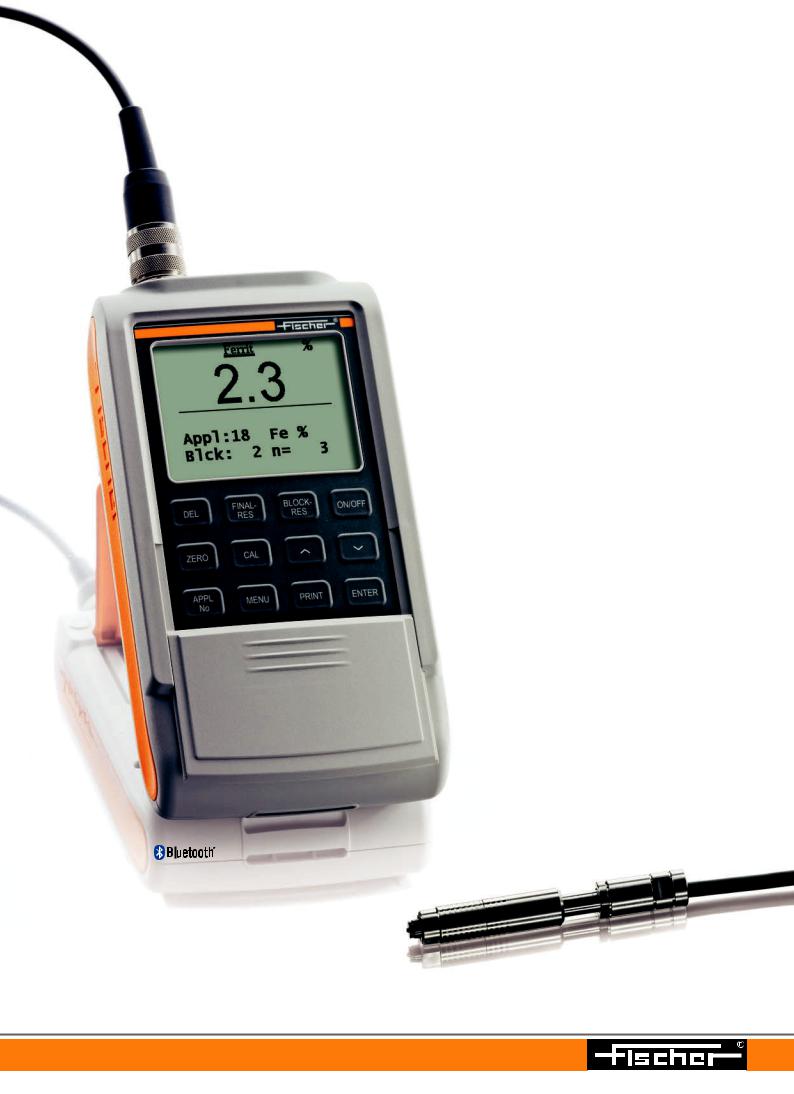Fischer Technology FMP30 Instruction Manual

FERITSCOPE® FMP30 Measurement of the Ferrite Content in Austenitic and Duplex Steel
 Coating Thickness
Coating Thickness  Material Analysis
Material Analysis  Microhardness
Microhardness  Material Testing
Material Testing

Measurement of the Ferrite Content
Chemical, energy and processing plants are often subject to heat, aggressive media and high pressure. These circumstances demand steel with high corrosion and acid resistance that are resilient even at high temperatures. If the ferrite content is too low, then the welded material is susceptible to hot-cracking, if the ferrite content is too high, the toughness, ductility as well as the corrosion resistance of the steel are reduced. For duplex steel, a ferrite deficit in the area of the weld seam results in stress corrosion cracking and reduction in strength.
The FERITSCOPE FMP30 measures the ferrite content in austenitic and duplex steel according to the mag- netic induction method. All magnetizable structure sections are measured i. e., in addition to deltaferrite also strain-induced martensite, for example, or other ferritic phases.
It is suited for measurements according to the BaslerStandard and according to DIN EN ISO 17655. Areas of application are onsite measurements, e. g. of austenitic platings as well as weld seams in stainless steel pipes, containers, boilers or other products made of austenitic or duplex steel.
Duplex steel is used increasingly in the chemical and petrochemical industries, e. g., for boilers and pipelines. A ferrite deficit in the weld seam area leads to strength reduction, an excess ferrite content to a reduction in toughness and ductility.
In particular when welding duplex steel, the ferrite content in the welding area can easily assume unfavorable values either due to unsuitable welding filler materials or through poor heat input or heat removal. Only an onsite measurement can provide the assurance that the processing did not change the optimum ferrite content in an unfavorable manner at the expense of mechanical or corrosion-resistance properties.
Measurement of the ferrite content of a weld seam
2 |
FERITSCOPE® FMP30 |

Simple and quick measurements
It is easy to measure the ferrite content accurately when using the FERITSCOPE FMP30. Upon probe placement on the surface of the specimen, the reading is displayed automatically and stored in the instrument. The probe can also be placed onto hard to reach areas. For such applications, the instrument features an “external start” function to trigger the measurements with the push of a button. This is ideal for measurements in pipes, bore holes or grooves.
Finding weld seams in polished surfaces is made easy through the “continuous display” instrument function. When scanning the surface with the probe with this function enabled, the continuous readings are displayed only. A change in the ferrite content reading indicates that the weld seam has been found.
For easy ferrite content measurements along a weld seam, the instrument offers the “continuous measurement capture” function. When scanning the weld seam with the probe positioned, the continuous readings are captured and stored. This provides a ferrite content profile along the weld seam.
Measurement influencing factors do not significantly affect the FERITSCOPE FMP30. Ferrite content measurements can be carried out regardless of the substrate material properties starting at a plating thickness of 3 mm.
Corrective calibrations with customer-specific calibration standards or correction factors (included) can be used to take influences of the specimen shape (strong curvature), plating and substrate thicknesses into account. The calibration is always stored measurement-application specific in the respective application memory.
Determination of the ferrite content in the weld seam area using the FERITSCOPE FMP30
3
